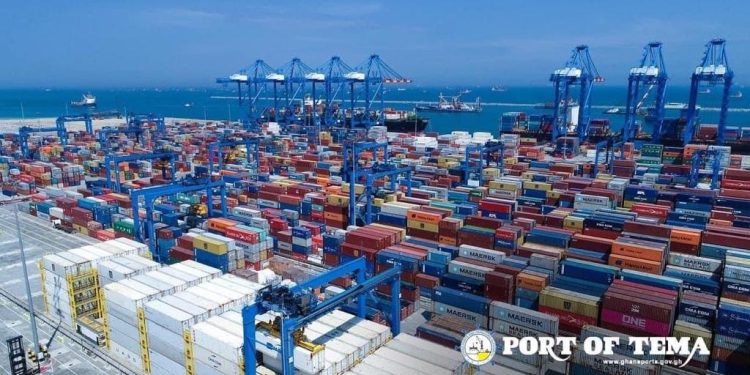Container traffic through Ghana’s sea ports has reached its highest level in ten years, solidifying the country’s role as a rising maritime trade hub in West Africa.
New figures released by the Ghana Ports and Harbours Authority (GPHA) show that container flow is projected to hit 1,701,246 twenty-foot equivalent units (TEUs) in 2024—more than double the 793,737 TEUs recorded in 2014.
The data reveals the overwhelming dominance of Tema Port, which continues to account for more than 95 per cent of national container traffic.
In 2024 alone, Tema processed 1,668,688 TEUs, compared with just 32,558 TEUs handled at Takoradi Port.
This entrenches Tema’s status as Ghana’s primary maritime gateway, though it also raises concerns about overdependence on a single facility.
The decade-long trajectory of container traffic has been marked by both steady expansion and occasional volatility.
Ghana first crossed the one-million TEU milestone in 2016, with volumes climbing consistently before surging in 2020 and peaking at more than 1.56 million TEUs in 2021.
A slowdown followed in 2022 and 2023, largely due to global supply chain disruptions during the COVID-19 pandemic, but the market rebounded sharply in 2024 with volumes hitting an all-time high.
Industry experts link the renewed growth to infrastructure upgrades at Tema Port and increasing intra-African trade driven by the African Continental Free Trade Area (AfCFTA).
The expansion of container-handling facilities and logistics capacity has enhanced Ghana’s competitiveness as a regional hub, attracting shipping lines and boosting trade volumes.
However, the concentration of activity at Tema has sparked calls for greater investment in Takoradi to create a more balanced and resilient port system.
Analysts warn that without diversifying capacity, Ghana risks congestion and over-reliance on a single port in the face of rising regional demand.
With container traffic now at record levels, Ghana appears well-positioned to strengthen its strategic standing in West Africa’s logistics and shipping industry.
The challenge, stakeholders say, will be ensuring that growth is sustainable, inclusive, and spread more evenly across the country’s port network.













